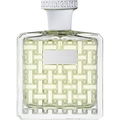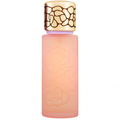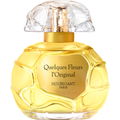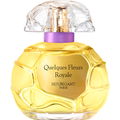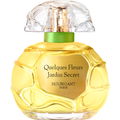09/21/2024

Serenissima
729 Reviews
Translated
Show original

Serenissima
Helpful Review
8
Autumn idyll in honey and hay
"Lord: It's time. The summer was very great."
This is how the poem "Autumn Day" by Rainer Maria Rilke, which I love very much, begins.
It asks for "two more southern days" so that the fruit can reach full ripeness.
"Indian Summer", Houbigant's cologne, picks up where Rilke's request ends:
The harvest has already been brought in, the barns, cellars and preserving jars are well-filled, the fields stubbly and empty.
The harvest festival and the farmers' big annual dance festival - how contrary these two are celebrated - are behind us: now the "Golden Autumn" reigns.
Fruit of all kinds is nowhere to be found in this fragrant end to summer: formerly exotic spices such as cloves and cinnamon reign, as well as other aromas that warm the skin, blood and senses and perfume the refined, creamy golden honey Spicy hay and, after the harvest of the plump red fruits, lonely but still strong tomato leaf green (we remember Sisley's "Eau de Campagne") compete with the dark scent of ripe rose petals impregnated with sandalwood.
The distant sunflowers at the edge of the field, like wise women already in their traveling veils, remain unimpressed.
This is what "Indian Summer" is like for me: a skillful painting in Rembrandt gold and Breughel brown.
This "season in fragrance" seems blessed; rich clouds of incense indicate this in the finale.
Yes: it's time for Houbigant's "Indian Summer".
If not now, when else?
This is how the poem "Autumn Day" by Rainer Maria Rilke, which I love very much, begins.
It asks for "two more southern days" so that the fruit can reach full ripeness.
"Indian Summer", Houbigant's cologne, picks up where Rilke's request ends:
The harvest has already been brought in, the barns, cellars and preserving jars are well-filled, the fields stubbly and empty.
The harvest festival and the farmers' big annual dance festival - how contrary these two are celebrated - are behind us: now the "Golden Autumn" reigns.
Fruit of all kinds is nowhere to be found in this fragrant end to summer: formerly exotic spices such as cloves and cinnamon reign, as well as other aromas that warm the skin, blood and senses and perfume the refined, creamy golden honey Spicy hay and, after the harvest of the plump red fruits, lonely but still strong tomato leaf green (we remember Sisley's "Eau de Campagne") compete with the dark scent of ripe rose petals impregnated with sandalwood.
The distant sunflowers at the edge of the field, like wise women already in their traveling veils, remain unimpressed.
This is what "Indian Summer" is like for me: a skillful painting in Rembrandt gold and Breughel brown.
This "season in fragrance" seems blessed; rich clouds of incense indicate this in the finale.
Yes: it's time for Houbigant's "Indian Summer".
If not now, when else?
7 Comments

















